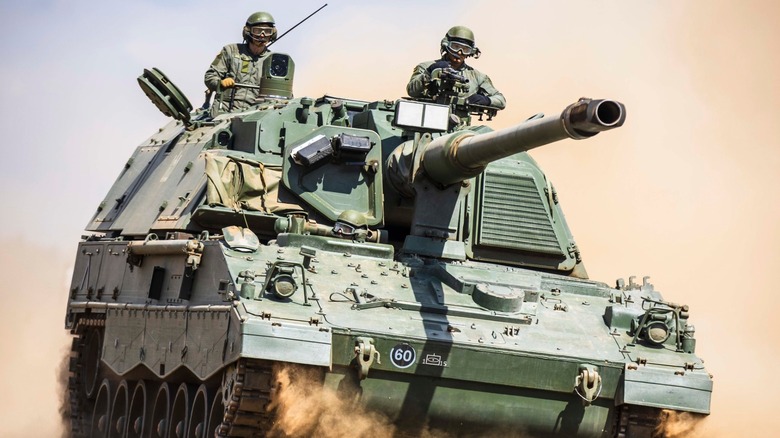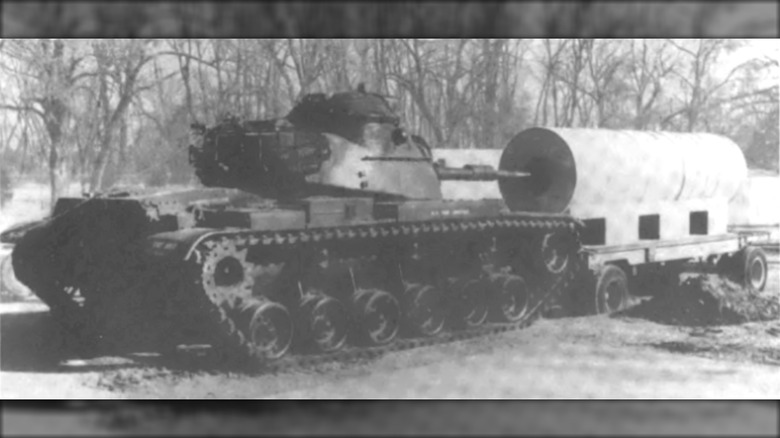Do 'Tank Silencers' Really Exist?
Despite popular culture's insistence, silencers, also known as suppressors, weren't invented for assassins — they came into being as an evolution of the technology that resulted in automobile mufflers. Regardless, they're seen in movies as components screwed onto the ends of pistols that make the gunshot ... well, silent. In reality, silencers diminish a gunshot only by 25 to 30 decibels on average, often still producing a loud BANG! That's how they work with firearms, but there are other types of silencers, including those used on tanks and howitzers.
If you've ever heard a tank fire its main gun, you know they're loud, and that's in addition to the tank's already loud operating noise added on top of it. Reducing the sound of a tank or self-propelled artillery isn't necessarily something you'd want in combat, as it's impractical and unnecessary. The reason someone would want to suppress the sound of a cannon firing is for training purposes, as limiting the noise only aids in the health and safety of the people operating the equipment. A popular image that's made the rounds online shows a massive silencer attached to an M109G 155mm self-propelled howitzer, and it's 100% real:
That vehicle is said to be one of the loudest in service for NATO, and its cannon registers at 180 decibels. For comparison, prolonged exposure to noise above 70 dB can cause harm, while 120 dB can cause immediate injury. Reducing the cannon's boom as much as possible in training environments is why tank suppressors were invented in the first place, and while they're not often used, there are several examples across multiple military forces worldwide.
How effective are tank suppressors?
The images found online are of a howitzer, which is a type of artillery, but tank silencers like the one pictured do exist. That's a silencer for one of the longest-serving armored vehicles in history, the M60 tank. It had a 105mm gun that was used during testing of the technology in 1969, and as you can see, it requires a great deal of support to function. These aren't screwed onto the barrels of tanks, as they'd cause significant damage and wouldn't function as desired. The technology behind tank and howitzer suppressors is pretty much the same you'd find in a much smaller device.
They redirect and expand some of the propellant gases and energy away from the barrel to reduce the sound produced. In terms of effectiveness, while tank suppressors function as desired and can reduce the sound by around 20 dB, the sound emitted is still incredibly loud. While hearing protection is barely helpful around a 180 dB noise, they can offer considerably more protection at 160 dB, so if a silencer is available, there's no harm in using them.
That said, there are considerable limitations because the gun cannot move, and in the case of Rheinmetall AG and IfL's suppressor attached to the M109G, the gun can only be fired at a 30-degree angle. This limits functionality, but still accomplishes what the suppressor was designed to do. Not much information is available about the M109G suppressor, but IfL reported that a muffler designed for the 120mm gun on a Leopard 2 main battle tank reduced its sound from 115 dB down to 100 dB. While still incredibly loud, it's certainly an improvement.

